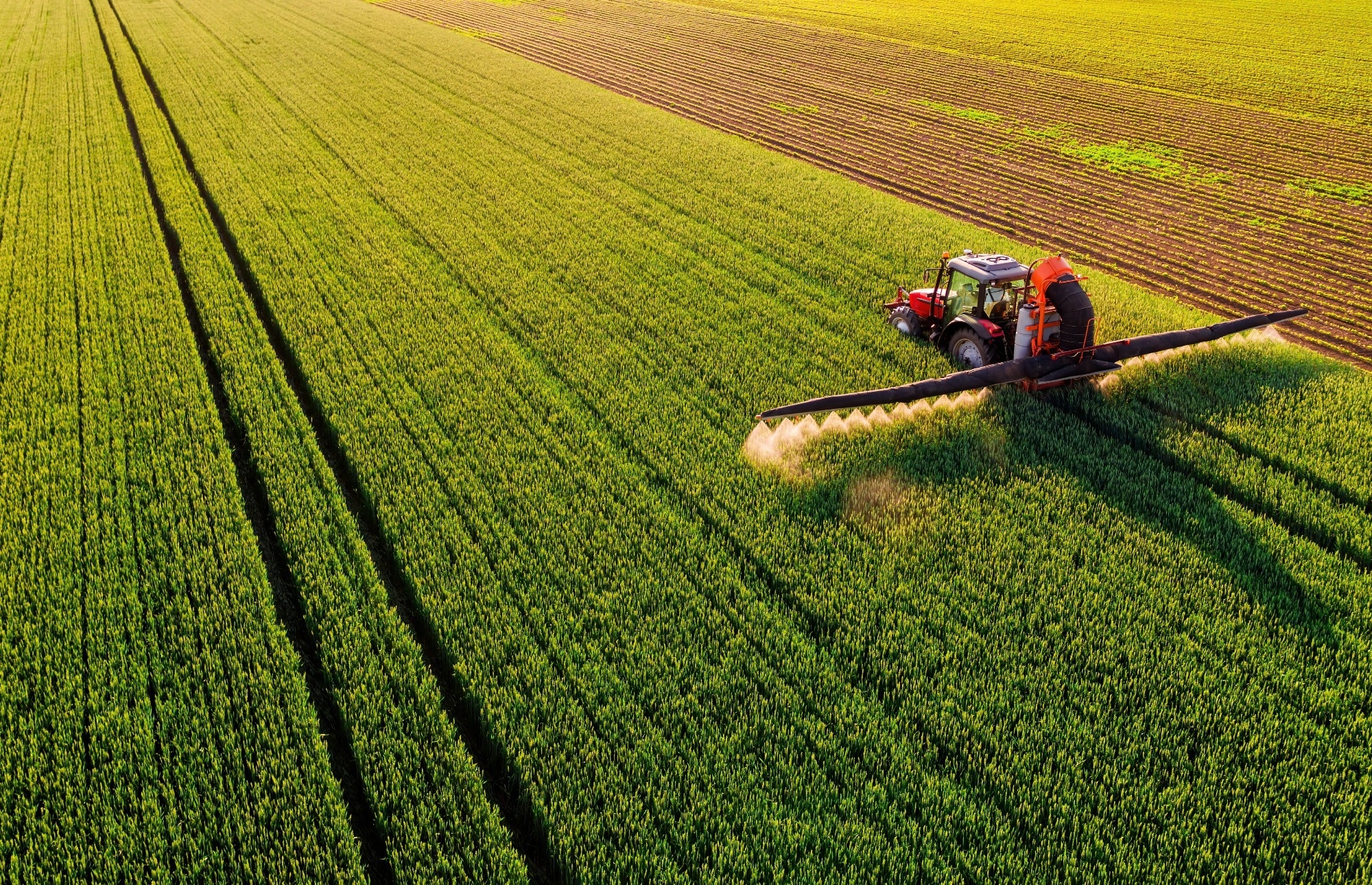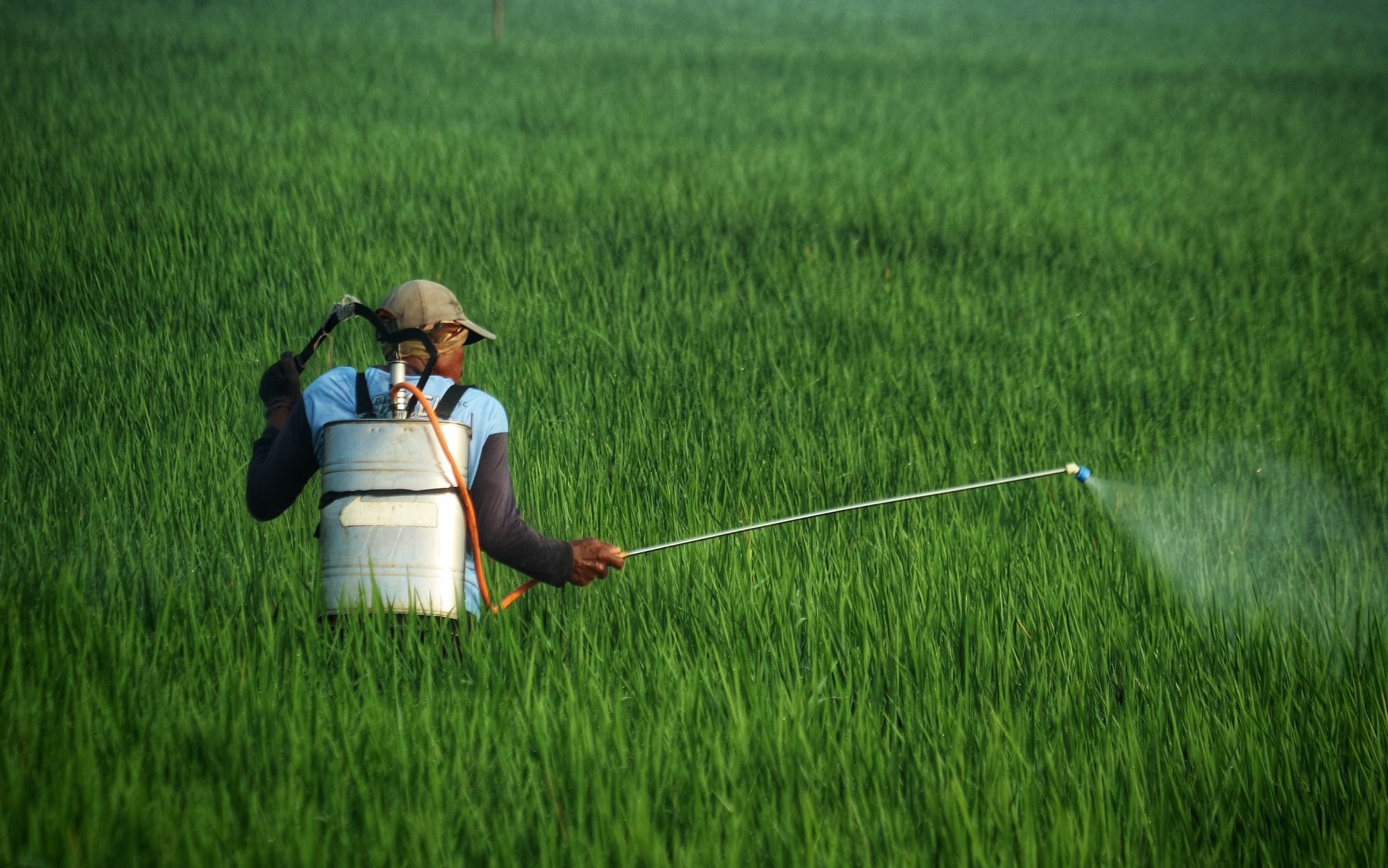Pests are evolving. Traditional chemicals used to prevent infestations are just not cutting it anymore. Now, scientists are turning to nanotech to shrink pest control and target insects at the molecular level with hopes to provide smarter, safer solutions.
 Image Credit: oticki/Shutterstock.com
Image Credit: oticki/Shutterstock.comAs well as feeding the global population, agriculture employs almost a fifth of the world's employees. Despite being one of the largest, and oldest, industries, farming faces major challenges from both abiotic and biotic stress factors that limit crop productivity. Pests are some of the biotic stressors responsible for an estimated 20 to 40 % reduction in global crop yields. Figures estimate that insect infestations damage roughly 18-20 % of crops worldwide per year.1
To tackle these micro aggressors, farmers typically rely on a range of chemicals, cultural controls and biologicals. These tools work well but have limits like off-target impacts, losses from environmental degradation, and the steady increase of resistance in many pest species.
In recent years, however, methods built around nanoscience have been designed to make pest control more targeted, to extend the effective lifetime of active ingredients, and to give farmers earlier, more local information.
Nano-enabled Formulations and Controlled Release
Many research groups have worked on reformulating conventional active ingredients at the nanoscale. The idea is not to create a new toxicant but to change how an existing active ingredient behaves. For example, reduce drift, increase wetting and adhesion to leaves, control release over days or over weeks, or even to target uptake into insect pests. Researchers have documented several examples in recent reviews.
For instance, polymer-based nanocapsules have been designed to slowly release insecticides and silica or clay carriers that bind and then gradually dispense active molecules. These formulations exceed the efficacy of standard sprays while using smaller total quantities of active compound in field and semi-field trials. 2, 3
The nano-enabled controlled release systems have two practical benefits. First, reducing spray drift and volatilization preserves the active ingredient where it is needed and also lowers off-target exposure to vertebrates, pollinators, and soil organisms. Second, controlled-release systems can reduce the number of passes a grower must make over a crop.
Even small reductions in applications cut fuel, labor, and non-target impacts. However, producing consistent nanoformulations at scale, ensuring long-term storage stability, and demonstrating predictable environmental behavior to regulators are non-trivial engineering tasks that companies and regulators are still working through. 2, 3
 Image Credit: Kucing images/Shutterstock.com
Image Credit: Kucing images/Shutterstock.com
Nanotechnology and Pesticides
Nanotechnology in pesticides focuses on improving the efficiency, safety, and sustainability of pest control by using nanoscale materials and formulations. Researchers have developed specific hybrid nanomaterials that perform better than conventional pesticides.
For instance, in a 2024 study, Chen et al. engineered a novel hybrid nanomaterial composed of the natural polymer Chitosan and copper phosphate to form nanoflowers and demonstrated its potent fungicidal effect against the pathogen Rhizoctonia solani. 4
The researcher simplified the synthesis by using self-assembly involving nucleation, aggregation, and anisotropic growth of the hybrid structures. These nanoflowers achieved an inhibition level about 6.1 times greater than that of conventional CuO nanoparticles at a concentration of 200 mg L-1, despite containing only ~45 % of the copper mass compared to the CuO treatment. The researchers also reported crop trials showing significantly reduced infection levels in various host plants and broad-spectrum antibacterial activity. 4
Download your PDF now!
Nanosensors and Early Detection
Pest control is the most effective when early pest detection is applied. By using nano-enabled biosensor devices that use nanomaterials like gold nanoparticles, carbon nanotubes, graphene, quantum dots, etc., combined with biological recognition elements, farmers can detect microbial pathogens, viral infections, or chemical traces associated with pest presence at very low concentrations.
In recent years, there has been research demonstrating inexpensive, portable electrochemical or optical sensors that can detect fungal spores, bacterial pathogens, or pesticide residues in water and plant tissues, sometimes with response times measured in minutes. 2, 5
Sambasivam et al, in a 2024 study, developed a rapid electrochemical biosensor to detect the fungal pathogen Botrytis cinerea / Botrytis fabae, which causes gray mold in chickpea and lentil. Their platform used gold-nanoparticle-enhanced capture probes that are immobilized and then interrogated via screen-printed carbon electrodes (SPCEs). 6
The researchers reported a limit of detection (LOD) of about 10 fg in plant background material, which is about ten times more sensitive than qPCR in their tests. Moreover, the researchers also validated the sensor in quasi-field conditions and on naturally infected field samples. This work is novel in translating nanotechnology into a portable tool for an important crop pest rather than a purely lab-based assay, making it relevant for early detection and management of plant pathogens. 6
Future Prospects
Nanotechnology is improving pest management toward more precise, efficient, and environmentally responsible practices. Advances in nanoformulations and biosensing could enable farmers to apply treatments only when and where they are needed, reducing chemical use and non-target impacts.
However, challenges such as large-scale production, regulatory approval, and long-term environmental assessment need to be considered while progressing in this field. Nano-enabled pest control tools would potentially become practical and imperative components of integrated pest management systems to maintain agricultural productivity and minimize ecological disruption for future agriculture.
While not a silver bullet, nanotechnology is rapidly becoming a precision tool in agriculture's arsenal. From smart delivery systems to field-ready biosensors, the shift toward nanoscale solutions could reshape how we detect, manage, and mitigate pest threats, if the tech can scale and regulators can keep pace.
References and Further Reading
- Kumar, A., et al. Nanotechnology in Pest Control and Management. Sustainable Agriculture. https://www.researchgate.net/profile/Dr-Kumari-7/publication/396231342_ADVANCEMENTS_IN_PEST_MANAGEMENT_FOR_SUSTAINABLE_AGRICULTURE/links/68e3a11cd221a404b2a5aab8/ADVANCEMENTS-IN-PEST-MANAGEMENT-FOR-SUSTAINABLE-AGRICULTURE.pdf#page=161
- Sarmah, K., et al. (2023). Nanopesticides: revolutionizing pest management with nanotechnology. In Biol Forum Int J. https://www.researchgate.net/publication/372529802_Nanopesticides_Revolutionizing_Pest_Management_with_Nanotechnology
- Yousef, H. A., et al. (2023). Nanotechnology in pest management: advantages, applications, and challenges. International Journal of Tropical Insect Science. https://link.springer.com/article/10.1007/s42690-023-01053-z
- Chen, A., et al. (2024). Chitosan-copper hybrid nanoflowers: A novel nanopesticide for controlling Rhizoctonia solani infection in crops. Journal of Agricultural and Food Chemistry. https://pubmed.ncbi.nlm.nih.gov/39367837/
- Fabiyi, O. A., et al. (2025). Smart Nanosensors: A New Approach in Crop Protection and Pest Management. In Smart Nanosensors. Singapore: Springer Nature Singapore. https://link.springer.com/chapter/10.1007/978-981-96-3878-9_10
- Sambasivam, P, et al. (2024). A rapid electrochemical biosensor diagnostic for Botrytis ssp. causing Botrytis gray mold of temperate legumes. ACS Agricultural Science & Technology. https://pubs.acs.org/doi/abs/10.1021/acsagscitech.4c00136
Disclaimer: The views expressed here are those of the author expressed in their private capacity and do not necessarily represent the views of AZoM.com Limited T/A AZoNetwork the owner and operator of this website. This disclaimer forms part of the Terms and conditions of use of this website.